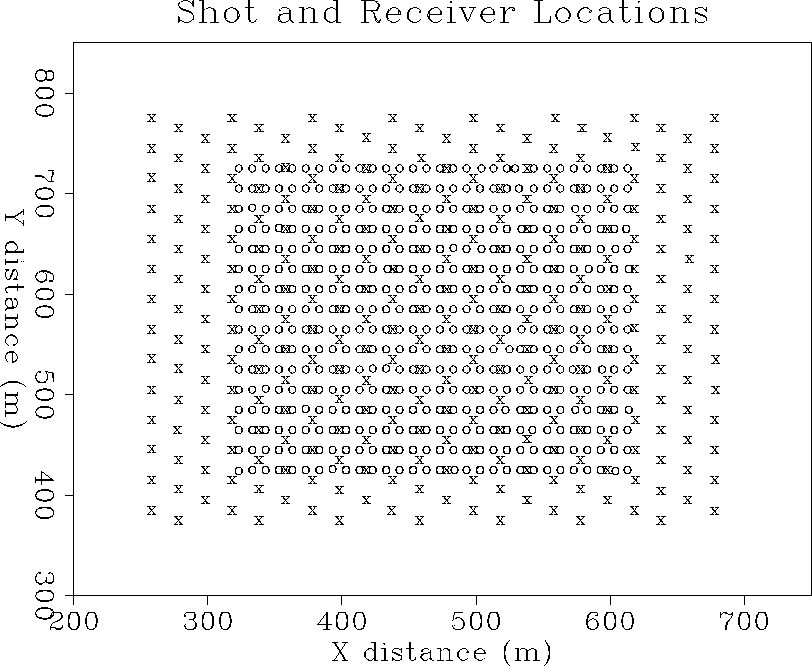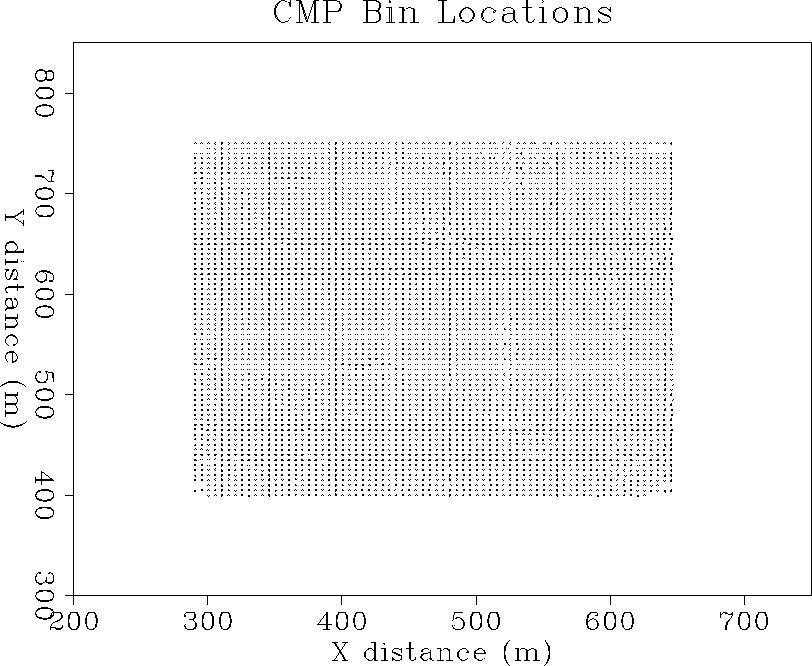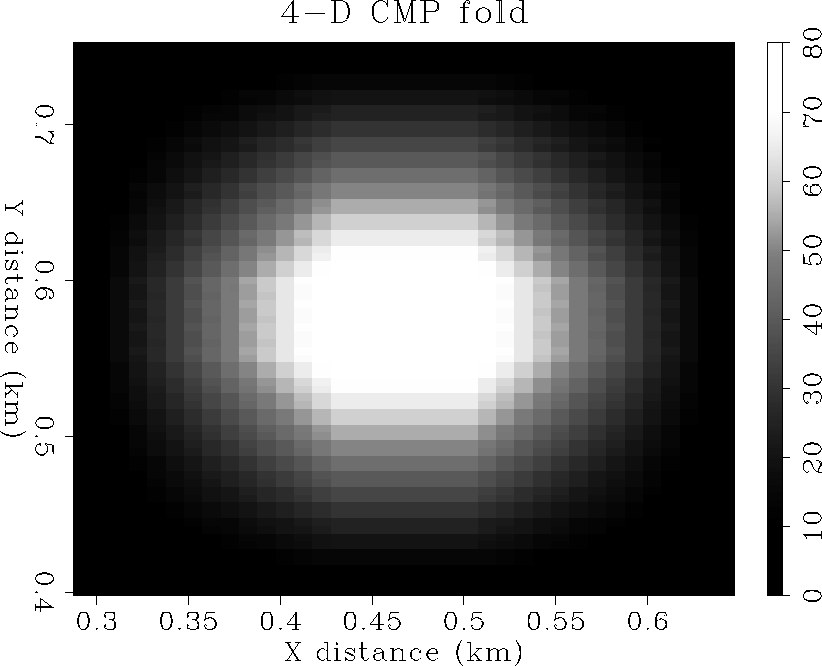




Next: IMAGES OF FLUID FLOW
Up: 4-D SEISMIC ACQUISITION
Previous: Time-lapse schedule
Each 3-D survey consists of 301 shots fired into a fixed array of 480 receivers,
as shown in Figure 3.
Each shotpoint consists of a small dynamite charge (50 g)
fired in a shot hole at 15 m depth. Each receiver is a single
hydrophone immersed in water at 7 m depth. Frequencies in the data
exceed 200 Hz at a 1 ms sample interval. The maximum offset in the data
is 480 m, with a good range of offset and azimuthal coverage.
Maximum fold is 80 in the center of the pattern, and 24 at the
edges of the hexagon of producing wells.
Figure 4 shows the CMP bin centers for each 3-D survey,
and Figure 5 shows the spatially variable CMP fold coverage.
A complete 3-D survey can be acquired in one working day.
Table 1:
Timeline for steam injection and time-lapse seismic surveys.
| DATE |
EVENT |
ELAPSED TIME |
| July 1992 |
baseline survey |
-1 month |
| August 1992 |
start steam injection |
0 months |
| October 1992 |
monitor 1 survey |
2 months |
| January 1993 |
monitor 2 survey |
5 months |
| May 1993 |
monitor 3 survey |
9 months |
| September 1993 |
monitor 4 survey |
13 months |
| March 1994 |
monitor 5 survey |
19 months |
survey
Figure 3 Overlain shot and receiver locations of the 4-D monitor survey.
Shots are marked ``x'', and receivers are marked ``o''.
 bins
bins
Figure 4 CMP bin-center locations of the 4-D monitor survey.
 fold
fold
Figure 5 CMP spatially-variable fold of the 4-D monitor survey.






Next: IMAGES OF FLUID FLOW
Up: 4-D SEISMIC ACQUISITION
Previous: Time-lapse schedule
Stanford Exploration Project
11/12/1997



